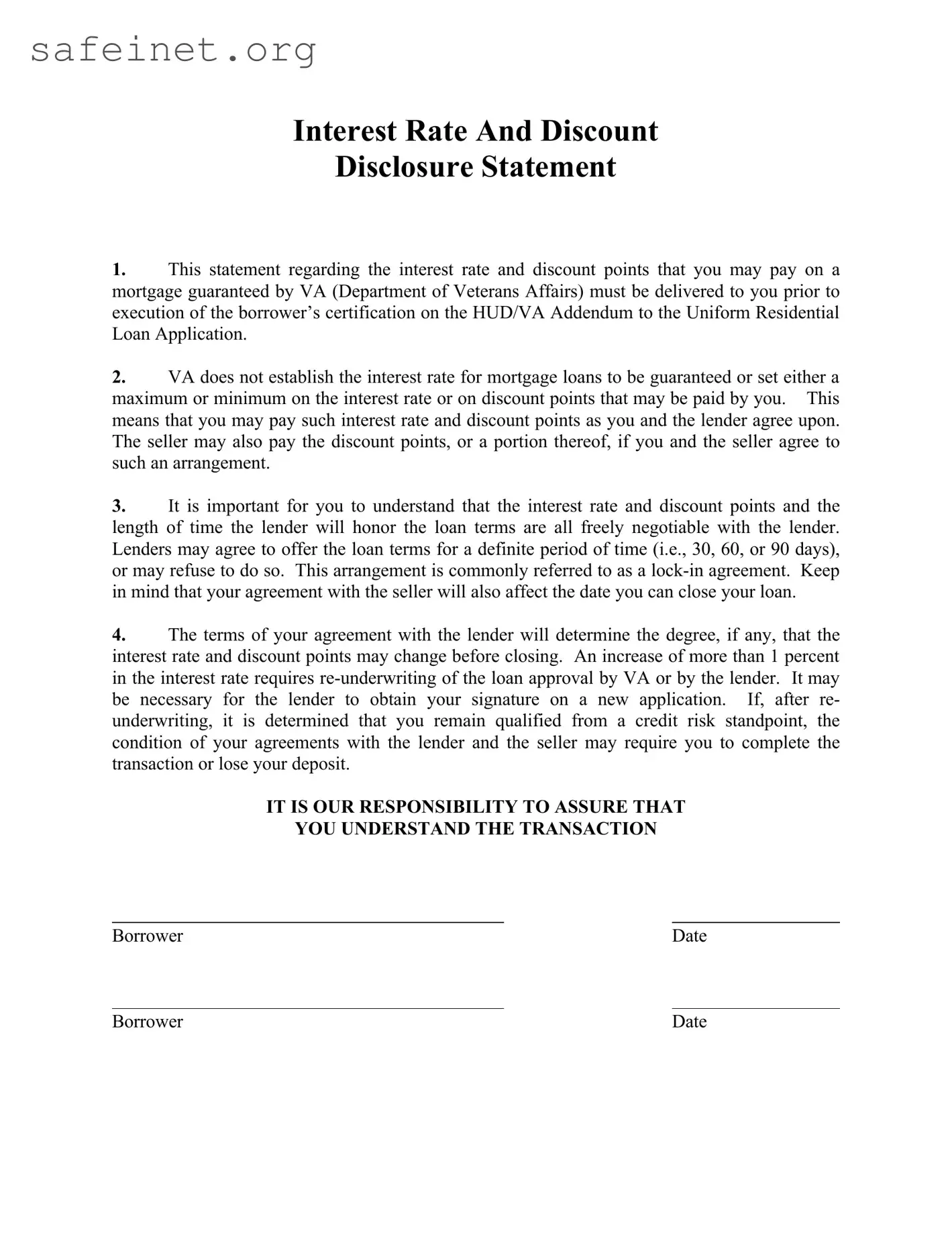The Truth in Lending Act (TILA) disclosure is similar to the Discount Disclosure Statement, as both are designed to provide borrowers with clear information about the terms of a loan. Under TILA, lenders must disclose the annual percentage rate (APR), finance charges, and total payments over the life of the loan. Both documents emphasize the importance of transparency, allowing borrowers to compare different loan offers and understand their financial commitments before making a decision. Just as the Discount Disclosure Statement allows negotiation of the terms, TILA encourages borrowers to ask questions and clarify terms with their lenders, fostering informed decisions.
The Good Faith Estimate (GFE) is another document akin to the Discount Disclosure Statement. This form outlines the estimated costs associated with a mortgage loan, including fees and expenses, which helps borrowers understand the financial implications of their loan arrangements. Like the Discount Disclosure Statement, it serves as a tool for communication between the borrower and the lender. Both documents aim to present critical financial information in a straightforward manner, so consumers can make well-informed choices regarding their mortgage loans.
The Loan Estimate form, introduced by the Dodd-Frank Act, shares a strong resemblance to the Discount Disclosure Statement. This three-page document consolidates key financial information about a mortgage loan, including loan amount, interest rate, and monthly payment. The purpose of both documents is to facilitate transparency and ensure that borrowers can easily compare different lending options. By providing clear and concise information, both the Loan Estimate and the Discount Disclosure Statement empower borrowers to enter the mortgage process with confidence, understanding their rights and obligations.
The Closing Disclosure is also similar in nature to the Discount Disclosure Statement. This document is provided to borrowers at least three days before closing a mortgage loan, detailing the final terms and costs associated with the loan. Just as the Discount Disclosure Statement informs borrowers about adjustable terms and potential changes, the Closing Disclosure summarizes closing costs, ensuring that borrowers are aware of any fees that will be due at closing. Both documents emphasize the significance of understanding the financial aspects of the loan, fostering an environment of clarity leading into the transaction's final stages.
The HUD-1 Settlement Statement bears resemblance to the Discount Disclosure Statement by detailing all costs associated with a real estate transaction prior to closing. It presents a comprehensive breakdown of fees to be paid by both buyers and sellers. Just like the Discount Disclosure Statement, the HUD-1 promotes transparency and the facilitation of informed decision-making. This preparatory step allows all parties involved to review their expected costs, making it easier to address any discrepancies before the closing takes place, thereby supporting a smoother transaction process.

